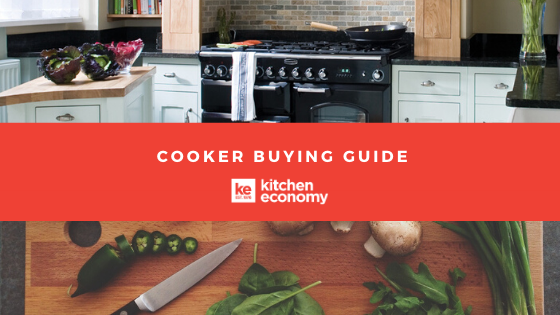
Before making a cooker purchase, there are a few important considerations to make. At the heart of the kitchen, a cooker can make or break the functionality of this vital space.
Whether you're a keen cook looking to show off to your friends or a busy working family, making an informed choice about your purchase is extremely important.

FUEL
The first decision you'll need to make is the fuel type. There are currently three combinations of fuels that can significantly alter your culinary expeditions.
Gas
The all gas cooker is solely powered by gas across the oven and the hob. This offers an immediate, reliable and precise heat source on the hob, making it a popular choice with professional chefs and enthusiastic home cooks.
The accompanying oven provides a traditional cooking experience with hotter temperatures at the top of the cavity, which is perfect for Sunday roasts.
Electric
Picking an electric cooker gives you three choices over your preferred hob, including solid plate, ceramic and induction. Although the main oven won't heat up as quickly as it's gas counterpart, they often come with a fan evenly distributes the hot air across the cavity.
Consequently, this option tends to be more popular with bakers who need consistent oven temperatures.
Dual Fuel
Combining the benefits of instant hob heat of a gas cooker with the stable oven temperatures of an electric cooker, dual fuel cookers give you the ideal conditions for a variety of dishes.

CAVITIES
The second consideration you'll have to make is the number of cavities you need. This can impact the number of dishes you can cook at the same time, letting you feed small of three all the way to hosting large dinner parties.
Single Cavity
The smallest cooking capacity offered is the single cavity. Equipped with just one main oven and integrated grill, you'll have all the cooking options you need in one location. Often boasting larger oven space, you'll have plenty of space to prepare a hearty family meal.
Twin Cavity
The next step up, twin cavities come with a main oven and a separate grill compartment. Unlike single cavities, you won't quite have the largest oven capacity, but you'll be able to use the grill and oven at the same time.
Double Oven
Finally, the double oven provides the best of the previous options. Coming with one larger main oven and a second smaller oven with integrated grill, you'll be able to cook larger scale meals with ease.

WIDTH
Cookers come in three standard widths, giving you the flexibility to design your kitchen to meet your cooking requirements. Furthermore, this makes it easy when trying to replace an old cooker when the time comes.
The two most common widths are 50cm and 60cm, but there is also a rarer 55cm option should you desire. Other measurements such as height and depth tend to be roughly the same across brands, so you'll have no problem fitting them against your kitchen cabinets.

HOT ZONE
The hot zone is the area directly above the hob surface and it is extremely important that this area only contains heat resistant materials, including plug sockets, shelves and wallpaper.
For both gas and electric hobs, this area needs to measure at least 75cm between the hob surface to the cooker hood.

COOKER FAQs
Over the years we've been asked a wide range of questions during cooker purchases. Here is a list of other common questions we get asked.
Are all gas cookers LPG convertible?
Unfortunately there is no simple answer to this question. Nowadays, most gas cookers are no longer LPG convertible, but there are still cookers that allow this option. We suggest you check the manual before purchasing, as this vary depending on the model.
What cooker features should I look out for?
Many cookers now come with so many features that it can be difficult to decipher which are most important. Here are our recommended lookouts:
- Timer - this is a fairly obvious option, but a lot of cheaper models no longer come with a built-in timer.
- Controls - the control knobs or touch controls on your cooker can drastically change the look of your kitchen.
- Catalytic liners - unlike enamel lined cavities, catalytic liners absorb grease which are then broken down at higher temperatures.
- Pyrolytic cleaning - the next step up above catalytic liners, pyrolytic cleaning heats up the oven to extremely hot temperatures that burns off any dirt.
- Multifunctional oven - many ovens now come with multiple cooking functions that let you use a combination of grilling, fan and even steam.
How much does it cost to install a cooker?
Here at Kitchen Economy we have priced our installation services extremely competitively in the market for the cheapest basket value in South Wales!
- Electric cooker - £42
- Gas cooker - £66
- Dual fuel cooker - £66
On average, that puts us £19-£90 cheaper than AO, John Lewis, Currys and Appliances Direct!